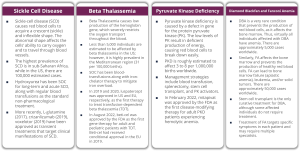Tag: strategy
Joint Clinical Assessment (EU HTA) Explained
A Comprehensive Exploration of Competitive Intelligence, Knowledge-Sharing, and Strategic Optimization in the Evolving Landscape of EU Health Technology Assessments.

The first companies undergoing the JCA process in 2025 will indeed be pioneers, blazing a trail for others to follow. These early adopters will be the first to gain practical experience with the JCA, providing valuable insights into the challenges and opportunities associated with the process. As they navigate the complexities of the JCA, these companies will inevitably develop strategies and best practices that contribute to their success.
However, as you rightly point out, not all companies will be willing to share their experiences openly. In a competitive market environment, companies may view their knowledge of the JCA process as a valuable asset and guard it closely as a trade secret. This creates a challenge for other companies seeking to understand the key success factors and optimize their approach to the JCA.
This is where competitive intelligence plays a crucial role. Competitive intelligence involves gathering, analysing, and interpreting information about competitors, market trends, and industry developments to gain a competitive advantage. In the context of the JCA, competitive intelligence can help companies learn from the experiences of others and identify strategies and tactics that contribute to success.
By skillfully gathering information from multiple sources, including public records, regulatory filings, industry publications, and market research reports, companies can gain insights into the approaches and outcomes of their competitors undergoing the JCA process. This information can help companies identify patterns, trends, and best practices that inform their own approach to the JCA.
Moreover, competitive intelligence enables companies to benchmark their performance against industry peers and identify areas for improvement. By comparing their approach to the JCA with that of their competitors, companies can identify gaps, weaknesses, and opportunities for enhancement. This allows companies to refine their strategies, optimize their resources, and increase their chances of success in the JCA process.

In addition to competitive intelligence, collaboration and knowledge-sharing among industry stakeholders are essential for navigating the complexities of the JCA. Industry associations, trade groups, and professional networks can serve as valuable forums for sharing insights, exchanging best practices, and collectively addressing challenges associated with the JCA. By fostering a culture of collaboration and knowledge-sharing, stakeholders can collectively advance their understanding of the JCA and optimize their approach to market access within the EU.
In conclusion, the introduction of the JCA represents a paradigm shift in the evaluation of medicines within the EU. As companies embark on this new journey, they face significant challenges and uncertainties. However, by leveraging competitive intelligence and fostering collaboration among industry stakeholders, companies can gain valuable insights, identify key success factors, and optimize their approach to the JCA. In doing so, they can enhance their chances of securing timely access to innovative therapies and improving patient outcomes across the EU.
Sources:
- Regulation (EU) 2021/2282 of the European Parliament and of the Council of 15 December 2021 on health technology assessment and amending Directive 2011/24/EU. EUR-Lex. https://eur-lex.europa.eu/legal-content/EN/TXT/?uri=CELEX:32021R2282. Retrieved Jan 30 2024.
- HTAR (HTA-Regulation): Implementation in Austria. Austrian Institute for Health Technology Assessment GmbH. https://aihta.at/page/htar-hta-verordnung-implementierung-in-oesterreich/en. Retrieved Jan 31 2024.
- D4.2 Practical Guideline on Scoping Process. EUnetHTA. https://www.eunethta.eu/wp-content/uploads/2022/09/EUnetHTA-21-D4.2-practical-guideline-on-scoping-process-v1.0.pdf. Retrieved Feb 14 2024.
- D5.1 Submission Dossier Guidance. EUnetHTA. https://www.eunethta.eu/wp-content/uploads/2022/12/EUnetHTA-21-D5.1-Submission-Dossier-Guidance-v1.0.pdf. Retrieved Feb 15, 2024.
- EUnetHTA 21 – Stakeholder Kick Off Meeting. EUnetHTA. https://www.eunethta.eu/wp-content/uploads/2021/12/EUnetHTA-21-Stakeholder-Meeting-03.12.-FOR-WEBSITE.pdf.
- Joint HTA Work. EUnetHTA. https://www.eunethta.eu/jointhtawork/. Retrieved Jan 30 2024
- EU Regulation on Health Technology Assessment (HTA). MedTech Europe. https://www.medtecheurope.org/news-and-events/press/eu-regulation-on-health-technology-assessment-hta/. Retrieved Feb 14 2024
- Proposals On EU-Wide Joint Clinical Assessments Fall Short, Warn German Industry Groups. Pink Sheet Pharma Intelligence. https://pink.pharmaintelligence.informa.com/PS147635/Proposals-On-EUWide-Joint-Clinical-Assessments-Fall-Short-Warn-German-Industry-Groups. Retrieved Feb 12 2024
Challenges in Hemoglobinopathies Projects and the Support of KOL Match
There are over 7,000 rare diseases described, affecting about 20-30 million people in the U.S. alone, according to the NIH. While each condition has its specificities, there are common challenges in the rare disease space, such as finding patients and leveraging centers of excellence and referral networks. This article discusses such challenges and how partnering with SAI’s subject matter experts can help overcome them.
Hemoglobinopathies are a family of rare diseases characterized by a defect in hemoglobin, the protein inside red blood cells that carries and delivers oxygen throughout the body. Although it is difficult to precisely determine the number of individuals affected by hemoglobinopathies, it is estimated that between 300,000 and 400,000 newborns every year have hemoglobin disorders.
While transient treatments have been the standard of care for most hemoglobinopathies, recently, gene therapy has strongly emerged as a potential curative treatment. In August 2022, the gene therapy beti-cel (Zynteglo, bluebird bio) has been approved by the FDA to treat adult and pediatric patients with transfusion-dependent beta-thalassemia. In addition, gene editing approaches (e.g., CRISPR/Cas) are invading the hematological space and can change the paradigm of disease therapeutics.
Despite the common defining characteristic of hemoglobinopathies, each condition has a unique underlying cause (i.e., specific genetic alterations). Thus, each condition affects unique populations and is supported by specialized healthcare professionals. Such differences, as well as the treatment methodology (curative vs. transient), determine the choice of specialists and patient population involved in a clinical study.
Our rare disease experts thoroughly understand the geographic distribution of hemoglobinopathies and the challenges associated with finding specialized centers and experts worldwide. At SAI, we utilize a curated list of top KOLs to find the best specialists driving innovation and treatment paradigms in hemoglobinopathies and other rare diseases.
KOL Match Rare Disease is SAI MedPartners’ subscription-based tool, which blends our extensive network of KOLs to our long-standing commitment to advancing rare disease research and development. This vetted KOL database supports our clients’ initiatives such as advisory board construction and clinical trial site selection, and it informs KOL interactions and engagement strategy.
The unique challenges in the hemoglobinopathies space require rigorous, expert work such as our rare disease experts do every day, with the support of unique tools such as our KOL Match database. Whether you want to discuss our strategic consulting capabilities in the rare disease space or explore the breadth of KOL Match, please contact us today.
Sources:
Kavanagh PL, Fasipe TA, Wun T. Sickle Cell Disease: A Review. JAMA. 2022 Jul 5;328(1):57-68. doi: 10.1001/jama.2022.10233. PMID: 35788790.
Gil Bellis, Alain Parant. Beta-thalassemia in Mediterranean countries. Findings and outlook. Investigaciones Geográficas, Instituto Universitario de Geografía. Universidad de Alicante (Spain), 2021, pp.1-10. ff10.14198/INGEO.19079ff. ffhal-03447028f
Grace RF, Barcellini W. Management of pyruvate kinase deficiency in children and adults. Blood. 2020 Sep 10;136(11):1241-1249. doi: 10.1182/blood.2019000945. PMID: 32702739.
https://rarediseases.info.nih.gov/



